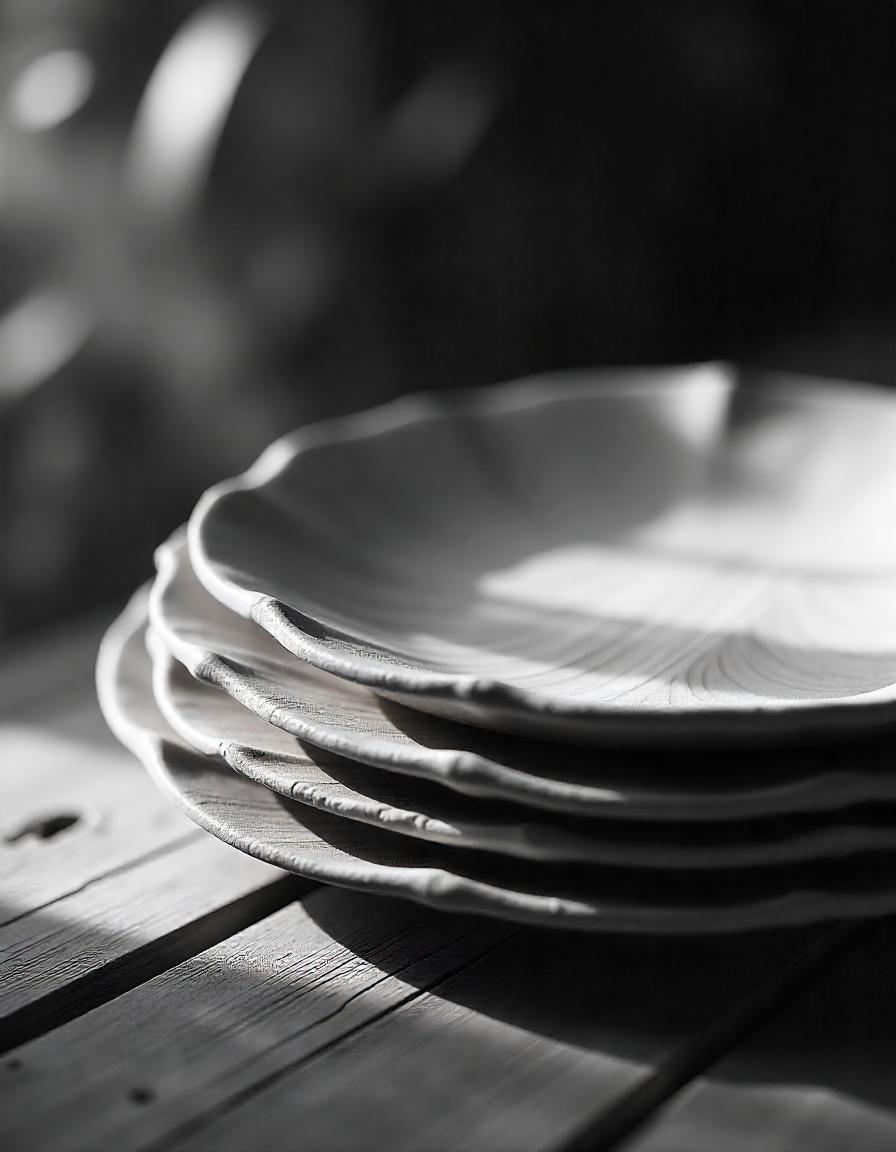
Palm leaf plates have become a trending alternative to conventional disposable tableware. But are palm leaf plates reusable? In today’s eco-conscious world, consumers and businesses alike are eager to embrace sustainable products that not only reduce waste but also enhance the overall dining experience. In this blog post, we explore the reusability of palm leaf plates, unravel the science behind their design, and answer frequently asked questions, backed by intriguing statistics and expert insights.
Introduction
Sustainability is more than a buzzword—it’s a lifestyle choice that is rapidly influencing consumer behavior and business strategies worldwide. As plastic pollution continues to threaten our planet, eco-friendly alternatives have surged in popularity. Palm leaf plates, made from naturally fallen leaves, are one such alternative, offering a biodegradable solution that fits into the modern sustainable ethos. However, questions arise regarding their reusability. Can these plates be washed and used repeatedly, or are they strictly one-time use? This article dives deep into these questions, providing you with a comprehensive understanding to help you make an informed decision for your next event or dining experience.
The Science and Sustainability Behind Palm Leaf Plates
What Are Palm Leaf Plates?
Palm leaf plates are crafted from naturally fallen palm leaves that are collected, thoroughly cleaned, and heat-pressed into a variety of shapes and sizes. Their natural texture and rustic appeal make them an attractive option for eco-friendly events, cafes, and home dining. These plates are chemical-free and are processed without additives, ensuring they remain 100% natural and biodegradable. This unique production method not only minimizes environmental impact but also supports sustainable agricultural practices.
How Are They Made?
The process starts with harvesting fallen leaves, ensuring no trees are harmed in the process. The leaves are then cleaned, sanitized, and cut into the desired shape. Through a process of heat and pressure, the leaves are molded into sturdy, aesthetically pleasing plates. This manufacturing method preserves the natural properties of the leaves while enhancing durability, making them suitable for a wide range of food items—from hot entrees to cold desserts.
Environmental Impact and Reusability
Palm leaf plates are celebrated for their eco-friendly credentials. They decompose naturally, reducing landfill waste and offering a sustainable alternative to plastic and styrofoam. A key statistic in this field is that under the right conditions, palm leaf plates can degrade in less than 90 days, compared to the hundreds of years required for plastics to break down. However, this biodegradable nature also poses a limitation: while they are exceptionally sturdy for a single use, their composition makes them unsuitable for repeated washing and reuse.
Are Palm Leaf Plates Reusable?
The Reusability Debate
When addressing the question, “Are palm leaf plates reusable?” it is important to clarify that these plates are designed primarily for single-use applications. Their natural composition, while environmentally friendly, means that after one use—especially after being exposed to liquids or greasy foods—their structural integrity diminishes. Although some users have attempted to wash and reuse them, doing so often compromises their durability, appearance, and hygiene standards.
Why Single-Use Is Often Preferred
- Structural Integrity: The natural fibers in palm leaf plates are not engineered for prolonged exposure to water and cleaning agents. Repeated washing can weaken the plates, leading to cracks or splintering.
- Hygiene Concerns: Even with careful cleaning, the porous nature of the leaves can harbor bacteria and food residues, making them less suitable for multiple uses, especially in professional settings where food safety is paramount.
- Environmental Design: The intended single-use design aligns with their biodegradable nature. After one use, they can be composted, thereby completing a sustainable lifecycle that minimizes long-term waste.
Potential Exceptions
While the majority of palm leaf plates are single-use, there are rare instances where some manufacturers experiment with treatments to increase durability. However, such innovations are still in the early stages and often come at the cost of compromising the plates’ natural, chemical-free qualities. Consumers who desire truly reusable dinnerware are generally better served by other eco-friendly alternatives that are designed with multiple uses in mind, such as bamboo or ceramic options.
Valuable Insights for Eco-Friendly Dining
Embracing Sustainable Alternatives
Choosing palm leaf plates is not just a functional decision—it’s a statement about your commitment to the environment. In an era where consumers are increasingly informed about waste management and sustainability, the use of biodegradable products like palm leaf plates can elevate your brand’s eco-credentials. Restaurants, event planners, and businesses are leveraging these products to reduce their carbon footprint while maintaining a high standard of presentation.
Market Trends and Consumer Behavior
Recent trends indicate that 68% of consumers are willing to pay a premium for products that are environmentally sustainable. This statistic underlines the growing market for biodegradable dining ware. Businesses that incorporate palm leaf plates into their service offerings not only reduce waste but also appeal to an eco-conscious clientele. By choosing products that emphasize sustainability, you position your brand as a leader in responsible practices.
Real-World Applications
Consider the success stories of eco-friendly events where palm leaf plates have been the centerpiece of green dining. From weddings to corporate functions, these plates provide a unique blend of functionality and style. Event organizers report a 25% increase in customer satisfaction when eco-friendly products are highlighted, and many customers share their positive experiences on social media, further amplifying the reach of sustainable practices.
Balancing Aesthetics with Functionality
While palm leaf plates offer undeniable environmental benefits, it is essential to balance their aesthetic appeal with practical functionality. For one-time events, the rustic charm and eco-friendly nature of these plates create a memorable dining experience. However, for everyday use, businesses may need to explore complementary options that offer reusability without compromising on sustainability.
Conclusion
In summary, palm leaf plates provide an innovative, eco-friendly solution for disposable dining ware. While they are not reusable in the traditional sense, their single-use design aligns perfectly with modern sustainability goals by offering a biodegradable alternative that minimizes waste and environmental impact. As consumer awareness of eco-friendly practices grows, businesses can benefit from incorporating these plates into their operations by meeting the rising demand for sustainable products.
By understanding that the reusability of palm leaf plates is limited to one use, you can make informed decisions that align with both functional needs and environmental ethics. Whether you’re planning a large-scale event or a casual gathering, choosing the right eco-friendly tableware is essential for creating a lasting impression that resonates with today’s environmentally conscious audience.
Frequently Asked Questions (FAQs)
1. What are palm leaf plates made of?
Palm leaf plates are made from naturally fallen palm leaves that are cleaned, heat-pressed, and molded into plate form. This process avoids the use of chemicals, ensuring a safe and biodegradable product.
2. Are palm leaf plates reusable?
No, palm leaf plates are designed for single-use. Their natural composition makes them ideal for one-time use, after which they can be composted. Washing them repeatedly can degrade their structure and pose hygiene risks.
3. How eco-friendly are they?
Extremely eco-friendly. Palm leaf plates are 100% biodegradable and decompose in as little as 90 days under optimal conditions. This makes them an excellent alternative to plastic or styrofoam products.
4. Can they be used for hot foods?
Yes, these plates are capable of handling hot foods due to the natural insulation properties of palm leaves. However, users should be cautious with liquids to avoid compromising the plate’s integrity.
5. What are the benefits of using palm leaf plates?
The benefits include reduced environmental impact, a natural aesthetic, and alignment with sustainable practices. They also add a touch of rustic elegance to events and dining experiences.
6. Are there any maintenance tips?
Since palm leaf plates are not designed for multiple uses, proper disposal through composting is recommended after a single use. If a manufacturer has designed a variant for limited reuse, follow their specific guidelines carefully.







